INTRODUCTION
On December 16, 2019, Wizards of the Coast reported in their post “THE THEROS BEYOND DEATH STORY ON CARDS” that it did not intend to release an e-book for the recently announced Theros Beyond Death collection.
On top of that, the post states that some cards will contain some flavor texts, worldbuilding details and important narrative points. The card images will be accompanied by informational graphic material added to this post.
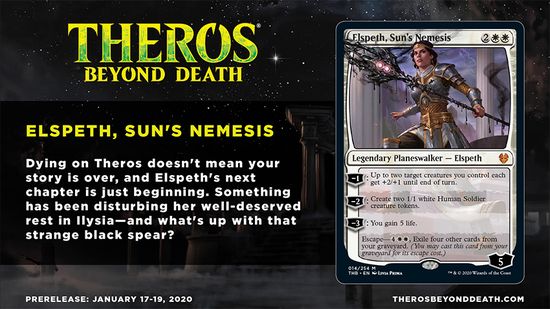
The year 2019 saw the release of three books, two from the War of the Spark collection and one from the Throne of Eldraine collection - War of the Spark: Ravnica and War of the Spark: Forsaken by Greg Weisman and Throne of Eldraine: The Wildered Quest by Kate Elliot. It is noteworthy that since Throne of Eldraine, the narrative was limited only to Elliot's book, that is, there were no plans for the return of tales on the Magic Story site.
According to a report also published in December 16, 2019 at the website Hipsters of the Coast, the Theros Beyond Death collection will also feature no stories published via the web.
In short, the new collection of Magic the Gathering will not feature stories or books. However, the game has always had some kind of auxiliary media for building its narrative since its first book - 1994's Arena, by author William R. Forstchen.
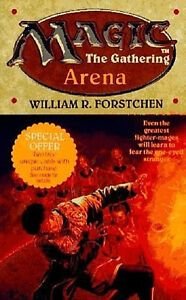
It is noticeable the importance of tales and books for Magic the Gathering, as there is an clear interest from players and is what connects many to the game. An example of this would be to find out that our favorite Planeswalker is much more than simply the art and layout on its card - it has a very long history that goes beyond gameplay. Therefore, in this article we will discuss the following question: How important is narrative to the gaming experience in Magic the Gathering?
ADDING GAME DESIGN TO THE DISCUSSION
First, let's establish a common language. For this article we will use a little of Negrelli's Framework SAN (2017) designed to establish dialogue between consumers and game developers. The model structures a game by its System, Art and Narrative (SAN), which will be discussed below.
System refers to the rules of interaction with the game. The rules define what may happen in the game and the conditions for events to occur. This is where the rules and mechanics of Magic the Gathering cards are located.
Art is defined as the sensory stimuli relevant to the game. It is what accurately communicates to the player what is part of the game and what can be expected from it. This could be valid even for something external to the System behavior, such as advertising pieces. That is, the arts of Magic the Gathering must adequately communicate the function of a card, such as the Ashiok, Nightmare Muse card, which in a systematic perspective interacts with the in-game action "Exile", but is complemented by the narrative and its art. They make this mechanic a metaphor for Ashiok manipulating memories and nightmares.

Narrative, on the other hand, has the function of conveying a notion of change in the state of the game (in Magic the Gathering, this change of state can be easily exemplified by stack and resolving). And it is made up of three subsections: premise, macronarrative and micronarrative. We then define:
• Premise: the context of the game. The ambiance or background presented to the player. This premise is reinforced with dialogues and scenes that describe the sequence of events in the narrative and the characters' perceptions of this universe, resulting in a plot. It is noteworthy that even the title of the game can reinforce the premise ("Magic the Gathering" itself being an example).
• Macronarrative: this aspect most closely resembles the traditional notion of narrative (chapters in a book, for example). It is the way to organize the game's progression within its own fiction, later providing the existential motivation for Player's actions (in a smaller scale) in the Micronarrative.
An interesting example of Macronarrative is seen in the Saga cards that will return in the Theros Beyond Death collection. For Magic, each player's turn is like a chapter and these card emphasize this notion with the addition of lore counters that advances the Saga to the next chapter, triggering effects that transform the gaming experience.

• Micronarrative: a description of the events that occur immediately from the Player's action and their reactions. An interesting example is the "Escape" action introduced in Theros Beyond Death - when we use this mechanic in the Elspeth, Sun's Nemesis card, the Planeswalker escapes from the underworld.

THE RELATION BETWEEN NARRATIVE AND PLAYER EXPERIENCE
It is not appropriate for this article that we argue about fun, but it is elemental to a good game that it is a fun game. After all, what makes us addicted to Magic the Gathering is the sense of joy and pleasure that is brought to us when we interact with our cards (even though "fun" may not be the main goal at higher levels of play).
Within the game design there is agreement that the first step in bringing the player to fun is originated by immersion. It is then followed by the consistency of the mechanics (System, or the rules of the game) and finally followed by the quality of the fiction (Art and Narrative), as they generate stimuli, which define what are the sensations that a game element wishes to cause, thus capable of creating a strong degree of empathy between player and game character, for example. In other words, Art and Narrative play an essential role in what is defined as immersion (and consequently in fun), even if this role is not as direct as the System's.
There are games that seek to create fun through their mechanics and gameplay, with a higher focus on the System. However, there are those who focus their resources on the Narrative as well as their Art, seeking to establish an affective engagement of the player. That said, it is not uncommon to find games that offer a balance between the System, Art and Narrative. These games aim to be universalistic and cover all the possibilities for fun, and this is where Magic the Gathering is located, argument reinforced by Mark Rosewater in his 2016's Game Developers Conference presentation about Magic that shows several ways we can connect and have fun with the game.
This diversity of ways we can connect and have fun with Magic is what makes storytelling so important. By deciding not to publish an e-book or short stories from Theros Beyond Death, Wizards of the Coast is limiting players' ability to engage with the game. Since in addition to stories being ways that players can locate themselves within a universe by its characters and situations, new stories are new information, news in a universe. In this case, this universe is a game.
Here's an example of how we are consistently being introduced to new information by Magic's narrative. We were interested in the watermarks on the cards representing the Guilds of Ravnica to only later find that there is a name for these combination of two colors. Moreover, these names name represent guilds that have vast narratives with plenty of characters, leaders and guild champions with whom we now have some kind of affinity and identification. This constant exposure to new information is a vital part of the player engagement.
Therefore, it is essential to bring new information not only through mechanics, but also through narratives, so as to keep the players interested. For beyond System and Art, Narrative is also an essential way for players to engage and bond with the game. In this way, the absence of new books and short stories from our dear Multiverse will cause the immersion to diminish, and gradually Magic the Gathering will lose an important part of its engagement and interest. It may even stop being fun for a lot of players.
CONCLUSION
By analyzing Wizards of the Coast's positioning in relation to Theros Beyond Death's narrative through Framework SAN, we realize that (to date) the new collection is lacking in the Premise element of its Narrative due to their decision not to publish any book or short stories.
On the other hand, we can say that the Narrative of Magic the Gathering is essential to evoke player engagement. By opting for a storytelling format that exists only through flavor texts in the cards, Wizards of the Coast is limiting ways for players to connect to the game. Mainly due to the fact that there is less information about the narrative present in these flavor texts compared to short stories and books.
REFERENCES
BIBLIOGRAPHY
J. Schell. The art of game design: A book of lenses. 2 ed. Pittsburgh: CAC Press, 2015.
L. Negrelli. Framework SAN: a avaliação do jogo pelos jogadores, SBGames, 2017.
M. Csikszentmihalyi. Flow: The Psychology of Optimal Experience. London: Harper Perennial, 1990.
T. Sylvester. Designing games: A guide to engineering experiences. Sebastopol: O’Reilly media, 2013
OTHER SOURCES
THE THEROS BEYOND DEATH STORY ON CARDS
Wizards Says it has “No Plans For an Ebook” for Theros Beyond Death

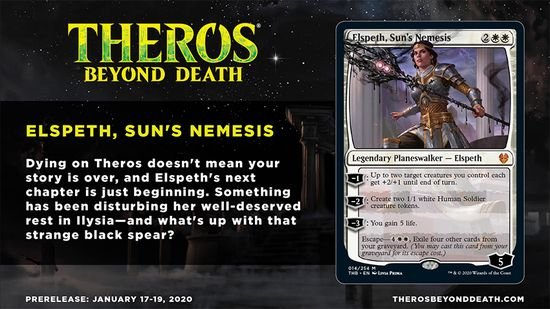






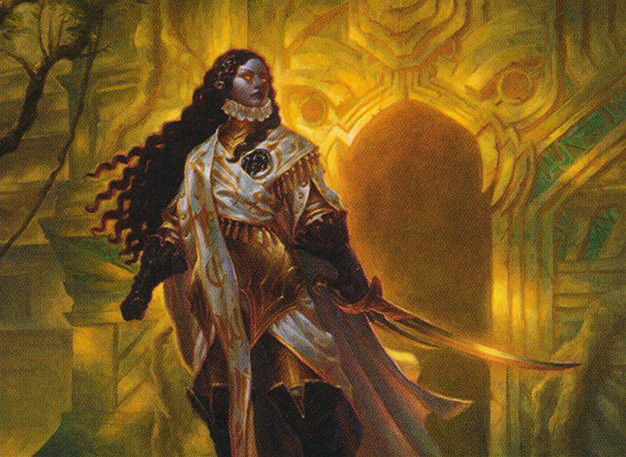
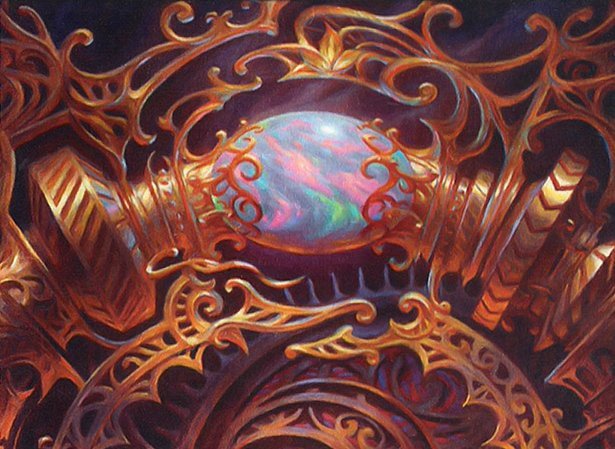



— Comments 0
, Reactions 1
Be the first to comment